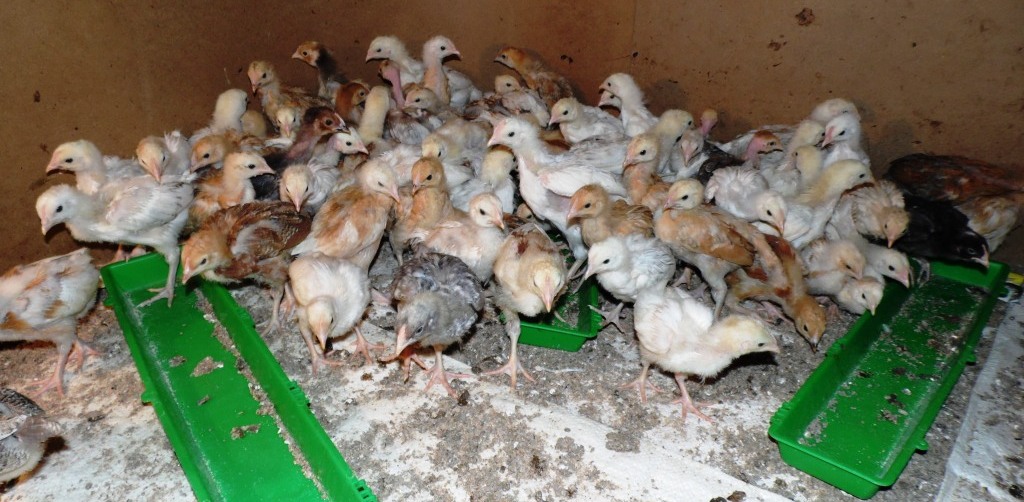Indigenous chicks feeding.The poultry sector in Kenya contributes approximately 1.7% to Kenya’s Gross Domestic Product (GDP)
Active and prospective farmers encounter various challenges in their day to day farming lives. These range from low production output, difficulties in controlling diseases and adoption of management interventions. This is due to inadequate training or lack of information on management of their farms especially in indigenous poultry management where chicken are mostly kept in a free range system.
The Kenya Agricultural & Livestock Research Organization (KALRO) has thus chipped in and is conducting training for first-hand poultry farmers, extension officers, supervisors and trainee farmers/farm managers on indigenous chicken management.
Since 2016, KALRO has provided training to over 2,500 farmers from all the 47 counties in Kenya. “We are offering this training to farmers to enhance their performance and overall productivity” says Vincent Ochieng, one of the officers in charge of training at KALRO. “Before, farmers had challenges in controlling diseases like gumboro, Newcastle & coccidiosis which can be prevented by simple vaccination through a new vaccine called avivax which we have developed at KALRO” added Ochieng.
The short training course provides an excellent background into the “what”, “why” and “how” on improved indigenous chicken management. The training is held at KALRO Non-Ruminant Institute-Naivasha Centre on selected dates depending on the applicants’ convenience.
READ ALSO: Aloe vera keeps off poultry diseases
READ ALSO: Whatsapp helps poultry farmer make more sales on festive season
READ ALSO: Aloe vera keeps off poultry diseases
The training is a four day hands on practice where farmers and other interested parties are taken through all the aspects of Indigenous Chicken production, though with an agribusiness point of view. Participants are engaged in theoretical classes in the morning sessions, and then the afternoon is spent on practical work based on the morning sessions.
Areas covered by the training include;
- Selection and breeding
- Bio-security
- Disease diagnosis and management
- Vaccine handling and usage
- Vices related to production and their management
- Hatchery management
- Chick brooding and placement
- Feeding and feed formulation
- Housing
- Information Technology in poultry production
- Economics and record keeping.
Training costs Ksh. 20,000 which caters for meals, facilitation fees and local transportation to and from Naivasha town. A fee of Ksh. 300 per day is charged to small scale farmers who go for training as members of a group at least 20 members and cannot afford the sh. 20,000 fee for four days. An individual farmer can also visit KALRO office on any working day and get free training.
Kenya’s Vision 2030 places great importance on value addition in agriculture and livestock as a means of raising rural household incomes as captured by the sector's driving strategy, the Agricultural Sector Development Strategy 2010-2020.
The poultry sector in Kenya contributes approximately 1.7% to Kenya’s Gross Domestic Product (GDP). The sector is majorly important to over 70% of the rural population where the industry is a major source of food, income and self-employment.
KALRO also provide training in hatching management, poultry record keeping, poultry health management and supervisory skills in poultry management.

















Comments powered by CComment